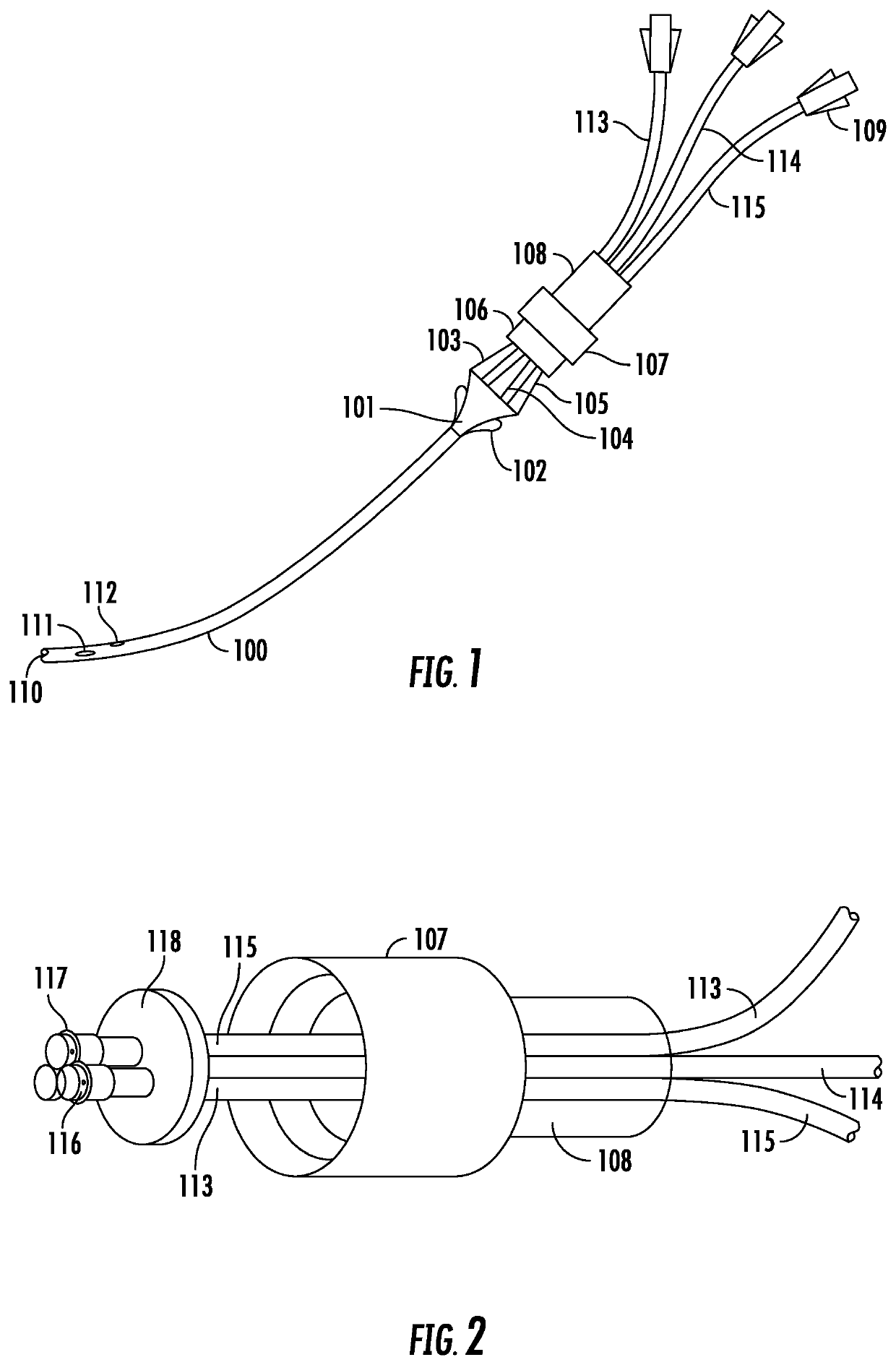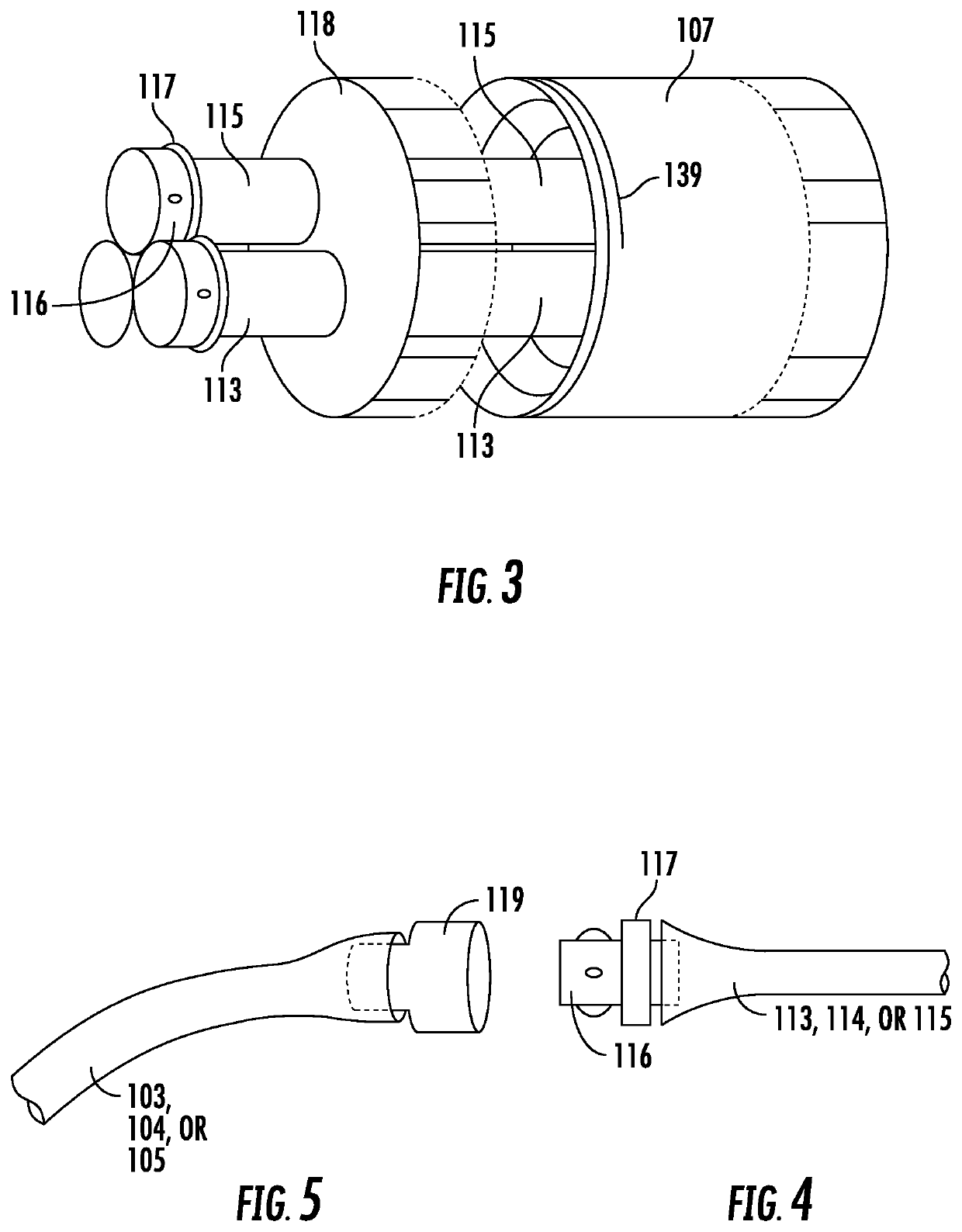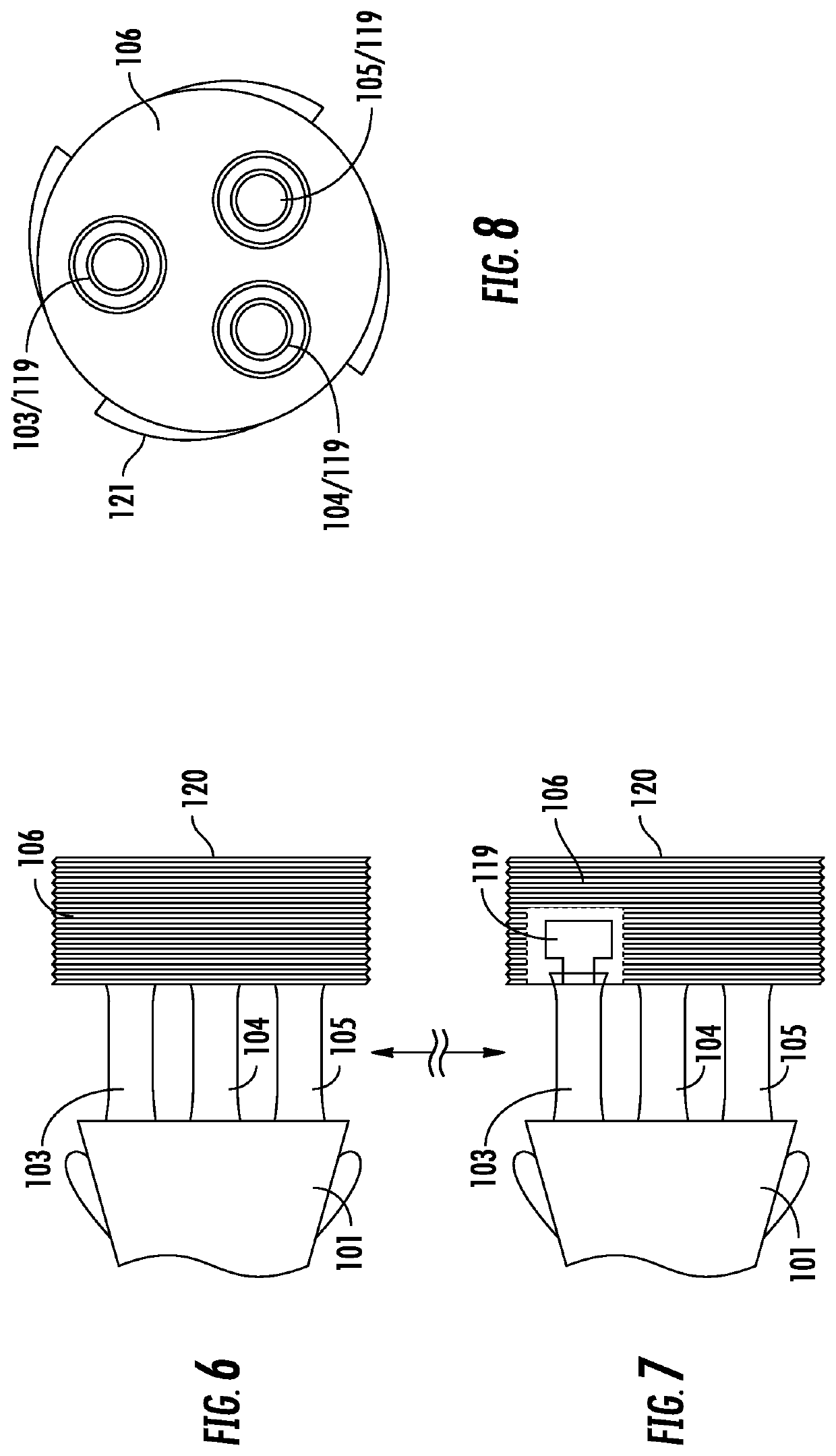Interchangeable lockable catheter
a technology of lockable catheter and lockable venous, which is applied in the direction of catheters, valves, other medical devices, etc., can solve the problems of increased medical expenses, increased patient's catheter placement, and no technology that allows for manipulation of that number, so as to improve patient comfort and convenience, the effect of low profil
- Summary
- Abstract
- Description
- Claims
- Application Information
AI Technical Summary
Benefits of technology
Problems solved by technology
Method used
Image
Examples
Embodiment Construction
[0061]Provided herein is a description of multiple configurations of an ILC capable of locking at least one lumen, providing antiseptic support, and, relative to a traditional PICC line, a small, singular extension from the catheter.
[0062]Throughout this application, references are made to various embodiments relating to the apparatus and its method of use. The various embodiments described are meant to provide a variety of illustrative examples and should not be construed as descriptions of alternative species. Rather, it should be noted that the descriptions of various embodiments provided herein may be of overlapping scope. The embodiments discussed herein are merely illustrative and are not meant to limit the scope of the interchangeable lockable catheter.
[0063]In the present description, any concentration range, percentage range, ratio range or other integer range is to be understood to include the value of any integer within the recited range and, when appropriate, fractions t...
PUM
 Login to View More
Login to View More Abstract
Description
Claims
Application Information
 Login to View More
Login to View More - R&D
- Intellectual Property
- Life Sciences
- Materials
- Tech Scout
- Unparalleled Data Quality
- Higher Quality Content
- 60% Fewer Hallucinations
Browse by: Latest US Patents, China's latest patents, Technical Efficacy Thesaurus, Application Domain, Technology Topic, Popular Technical Reports.
© 2025 PatSnap. All rights reserved.Legal|Privacy policy|Modern Slavery Act Transparency Statement|Sitemap|About US| Contact US: help@patsnap.com



